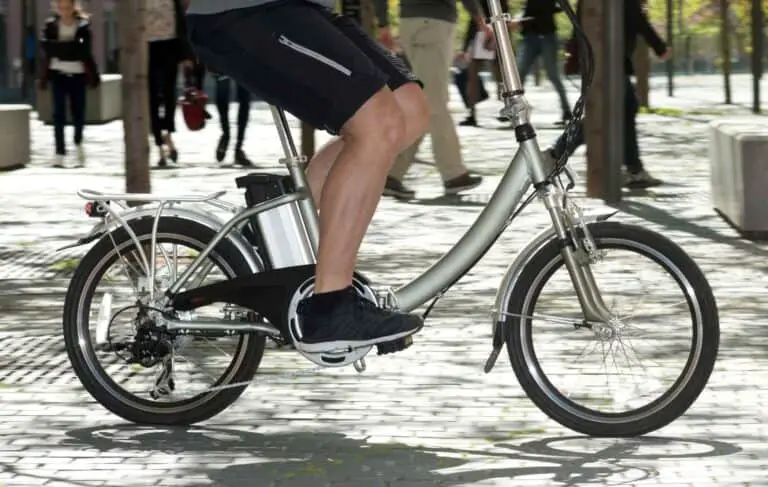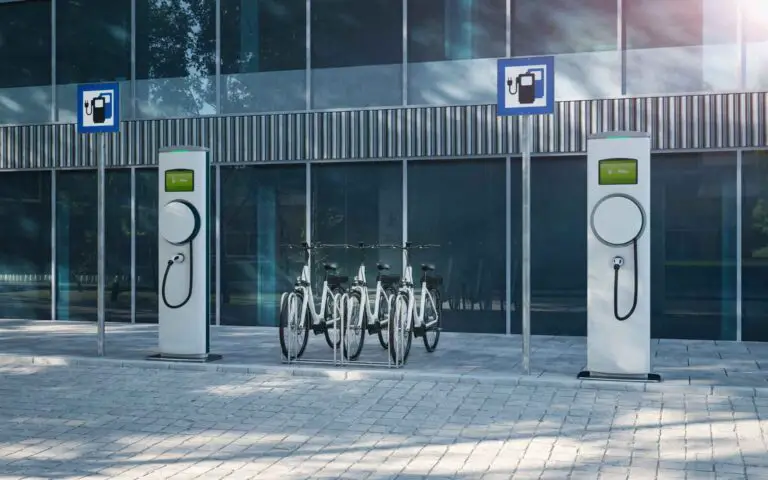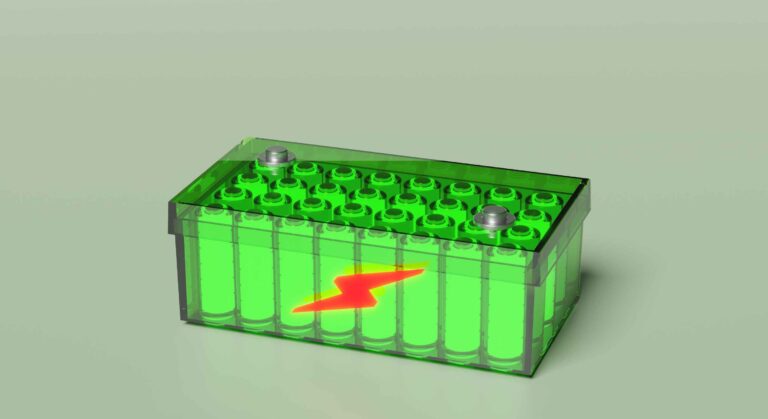Can an Electric Bike Charge While Pedaling
I know someone who claims that his electric bike can charge while he pedals. It piqued my interest since I often find myself with a drained battery every time I ride. But can an electric bike really charge while pedaling?
As a general rule, electric bikes do not typically charge while pedaling. While it’s possible for some electric bikes to have this feature, it’s very uncommon. The e-bikes that can self-charge are those equipped with regenerative braking or a self-charging feature.
In this article, we will explore whether e-bikes can charge while we pedal, how to make a self-charging e-bike, and answer common questions about charging e-bike batteries.
Can an Electric Bike Charge While Pedaling?
Typically, almost all standard electric bikes are not designed to charge while you pedal. Instead, e-bikes are equipped with batteries that can be charged using a power source. But is it possible to charge while pedaling? The answer is yes. Technology is continuously advancing, and researchers have already found a way to make this work. Electric bikes that have this feature are called regenerative or self-charging e-bikes.
Electric bikes with this feature are equipped with special technology that converts the kinetic energy you generate by pedaling into electric energy. However, it would be inefficient for e-bikes to rely solely on this feature. When you charge your battery, the power source provides a constant and sufficient supply of power. For the e-bike to charge while pedaling, you would have to pedal hard enough to generate sufficient kinetic energy to be converted into electric energy.
In cases where electric bikes have this feature, the charging capacity would not be equivalent to charging the e-bike directly from a power source. Moreover, since the e-bike would be equipped with such technology, the price will likely be higher. This also depends on other factors such as the brand and the quality of the materials used.
Here are some electric bikes with this feature:
| Electric Bike | Motor Power | Range | Cost |
| Freebeatfit MorphRover Electric Bike | 750W; 85 Nm torque | Up to 60 miles (97 km) | $999 |
| TeleportRide Electric Bike | 750W; 80 Nm torque | 100 miles (161 km) | – |
Freebeatfit Morphrover Electric Bike
The MorphRover e-bike is an innovative electric bike that can be charged while pedaling. This versatile e-bike can be used both indoors and outdoors, allowing you to ride outside and unleash its power, or use it indoors as a smart bike trainer for exercise.
The MorphRover e-bike is equipped with a powerful 750W motor. This motor provides enough power to propel your electric bike on various terrains, making outdoor journeys enjoyable. With a maximum torque of 85 Nm, the motor helps you tackle challenging terrains more easily and accelerate faster. This e-bike is also suitable for carrying cargo or a passenger. It features flat tires, which offer better control and balance, and it can reach a maximum speed of 28 mph (45 kph).
Additionally, the MorphRover e-bike is equipped with a 720Wh battery, allowing you to reach a range of up to 60 miles (97 km) or even longer, depending on various factors.
If you are tired of going outside and just want to exercise at home, you can transform the MorphRover e-bike into a smart bike trainer with a maximum power output of 2200W and a 20% simulated grade. The smart bike trainer features a personal trainer algorithm, gamified workouts on any display, smart saddle detection, and an auto resistance system.
The MorphRover e-bike does not charge as you ride around outside. Instead, it recharges when you use it in indoor mode. When used as a smart bike trainer, the energy you generate while exercising or pedaling is converted into electrical energy, recharging your e-bike battery. The manufacturer claims that a 30-minute exercise session with your MorphRover smart trainer is equivalent to 10 miles of range when you decide to ride the e-bike outdoors. If indoor exercise is not your preference, you can always plug in a charger to charge your electric bike using a power source.
To learn more about these electric bikes, you can visit their website here.
Another advantage of this electric bike is the price. You can have this 2-in-1 electric bike for only $999.
Teleportride Electric Bike
The Teleport e-bike is one of those electric bikes equipped with regenerative braking. Regenerative braking works by taking the energy wasted from braking or slowing down your electric bike and converting it into electrical energy, which recharges your electric bike battery.
The Teleport e-bike offers a choice between a 500W motor and a 750W motor. The 500W motor has a maximum speed of 20 mph (32 kph), while the 750W motor can reach speeds of up to 28 mph (45 kph). However, the price may vary depending on the motor choice. Additionally, there are different color options available: black, silver, yellow, or green. The e-bike also comes in two sizes to accommodate riders from 5′ to 5’8” and from 5’9″ to 6’7″. The manufacturer claims that this electric bike can reach an impressive range of 100 miles (161 km) on a single charge.
Unfortunately, this electric bike is sold out for the year 2024. However, it may or may not be available in 2025. You can contact the seller for more information.
Do Electric Bikes Recharge While Pedaling?
As a whole, electric bikes do not typically recharge while pedaling, but there are a few models that can. This feature on electric bikes is called self-charging or regenerative braking, but it is very uncommon.
Almost all electric bike batteries are charged directly using a power source. However, there are electric bikes that can self-charge as you pedal or use regenerative braking. Two examples of such electric bikes are the MorphRover e-bike and the Teleport e-bike.
Rad Power Bikes has previously manufactured electric bikes with regenerative braking, including models like the RadCity 3, RadCity 4, RadCity Step-Thru 3, and RadWagon 3. However, upon checking their website, these specific models are no longer available for purchase. Instead, Rad Power Bikes offers newer versions of the RadCity and RadWagon electric bikes, but these updated models no longer feature regenerative braking.
While this feature can be beneficial, it also has some drawbacks, which is why electric bike owners should weigh them carefully.
| Advantages of Regenerative Braking | Disadvantages of Regenerative Braking |
| This feature allows electric bikes to recharge, extending their range. It’s an incredible feature, especially if you’re away from home or far from any charging station. | Regenerative braking or self-charging uses technology that could add to the complexity of the overall design of the electric bike, making it more costly compared to traditional electric bikes of the same quality. |
| Regenerative braking reduces wear on brakes, brake pads, and rotors. Regenerative braking does the work for slowing down the electric bike, so traditional brake components are used less frequently, allowing them to last longer and reducing maintenance costs. | Regenerative braking may be less effective when ridden at lower speeds. Note that regenerative braking works when you use the brake, so with lower speeds, you’ll be using the brake less frequently. |
| When electric bikes use regenerative braking, you are able to recharge your battery without using any traditional power source. This reduces charging costs. | While braking with regenerative braking is just fine, there could be a difference in the stopping power of the electric bike. |
| Regenerative braking contributes to a much lower overall energy consumption, making e-bikes more environmentally friendly. | Electric bikes with regenerative braking have added complexity, so maintenance and repair may be costly compared to standard electric bikes, as professional knowledge may be required. |
| Regenerative braking is uncommon on eBikes compared to larger electric vehicles like cars. The amount of energy being recaptured is relatively small compared to the total energy consumption of the electric bike, so the increase in extended range may not be significant. |
How Can I Charge My eBike While Riding?
On average, you can charge your electric bike while riding if your electric bike has a self-charging feature or regenerative braking. You can also use a solar panel, generator, or power bank to charge your electric bike battery while riding.
Regenerative braking or self-charging is primarily an automatic process; however, riders may need to adjust some settings for it to work optimally. If your electric bike has this feature, you should check with your manufacturer or seller to understand the correct way to use it, as different e-bikes may have different processes.
If your electric bike does not have this feature, you can use other alternatives such as a solar panel, generator, or power bank. However, since you’ll be using these while riding, it’s crucial to set up everything properly to avoid damage and safety risks.
Charging your electric bike with a solar panel as you ride is possible, but the panel must have adequate sun exposure, as solar panels rely on sunlight to function. Additionally, the solar panel must be large enough to store sufficient energy to charge your e-bike battery effectively. It’s important to note that improperly charging your electric bike battery is not recommended, as it could damage the battery or reduce its performance. The same caution applies to generators and power banks.
If you find yourself away from home, you can refer to our article “Where To Charge Your Electric Bike When You’re Away From Home” for charging recommendations.
How to Make Self Charging Electric Bike?
As a general rule, making a self-charging electric bike requires a solid understanding of both the electrical and mechanical systems of an e-bike. This knowledge is essential for successfully creating a ‘D.I.Y.’ self-charging electric bike.
Building a DIY self-charging electric bike is quite challenging. You’ll need the necessary tools, materials, and most importantly, the knowledge to make it work. Essential tools and materials include a multimeter, power management system, wiring and connectors, an e-bike motor and controller that support regenerative braking, screwdrivers, wire strippers, wrenches, mounting brackets, and more. Additional materials might be needed depending on your specific project.
Watch the video below to see someone installing a solar panel on their electric bike.
Should I Charge My eBike After Every Ride?
As a whole, you don’t need to charge your electric bike after every ride, especially if your rides are short. It’s typically recommended to recharge your electric bike when the battery level drops to around 20-30%.
Charging your electric bike battery to full capacity (100%) and completely draining it (0%) every time is not advisable. Instead, it’s recommended to charge it up to around 80-90% and discharge it to about 20-30%. This helps maintain the optimal performance of your electric bike and prolongs the battery’s lifespan. However, it’s still important to fully charge and discharge the battery occasionally to calibrate it.
If you regularly ride your electric bike for long distances, it’s crucial to recharge it after every ride. This ensures that you’ll have enough battery power for your next journey. Insufficient charge can significantly reduce your range, affecting your overall riding experience.
Therefore, it’s essential to assess your riding needs and charge your electric bike accordingly to ensure it’s always ready for your next adventure.
For more detailed guidance on charging your electric bike battery correctly, you can refer to our article titled “Charging eBike Battery the Right Way (First Time & Everytime).”
“Recharge your batteries to update your spirit – refresh your perspectives to upgrade your soul.”
– G. Boston
Should I Run My eBike Battery Down Before Charging?
As a general rule, you don’t have to run your electric bike battery down before charging. Ideally, it’s best to start charging when the battery level hits around 20-30% and stop at 80-90% to maintain optimal battery health and performance.
Properly charging an electric bike battery maintains its health, resulting in optimal performance. A well-maintained battery tends to last longer, ensuring a longer lifespan for your electric bike. Therefore, it’s advisable to charge the battery when it reaches 20-30% capacity. However, if you’re embarking on a longer ride, completely draining the battery is acceptable.
After draining the battery, recharge it to around 80-90% capacity. However, if you’re planning another long-distance ride, fully charging the e-bike battery is also acceptable.
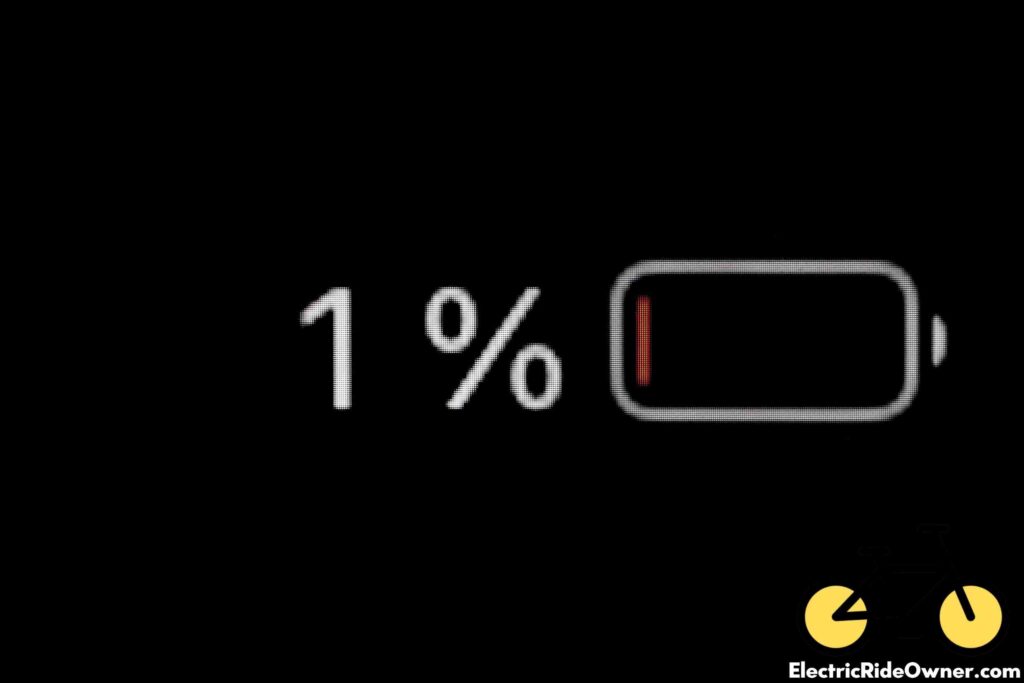
Can You Charge an Electric Bike On The Go?
On average, charging your electric bike while on the go is possible using various alternatives. You can make use of a car battery, solar panel, generator, or power bank to charge your electric bike battery.
You can charge your e-bike battery using a car. Simply remove the battery from the electric bike, place it in the car, turn on the ignition, and plug the battery into the socket to charge it. However, always ensure that your e-bike charger is compatible with your car’s DC outlet.
Another option is to use a power bank to charge your electric bike on the go. However, you must ensure that the power bank’s current is higher than the wattage pull of the electric bike battery. For example, if your battery has a capacity of 624Wh, then you should use a power bank with a higher capacity. Using a power bank with a lower capacity may not fully charge your electric bike or may not charge the battery properly, which could potentially damage your electric bike if used regularly.
A solar panel is also another alternative for charging your electric bike on the go. However, since solar panels rely on sunlight, they require adequate sun exposure to charge your electric bike effectively. Additionally, use compatible connectors and ensure proper wiring connections to charge your electric bike battery.
For more information about charging your electric bike on the go, you can read our article “Charging eBike on the Go (Car Battery, Inverter, Power Bank, Solar).”
If none of these methods work for you, you can also search for electric bike charging stations in your area if available. Additionally, you can charge your electric bike battery at private establishments, camps, e-bike shops, or any place with an accessible outlet. Just remember to ask for permission before using their power supply. It’s also wise to carry some cash, as charging at certain locations might incur a fee.
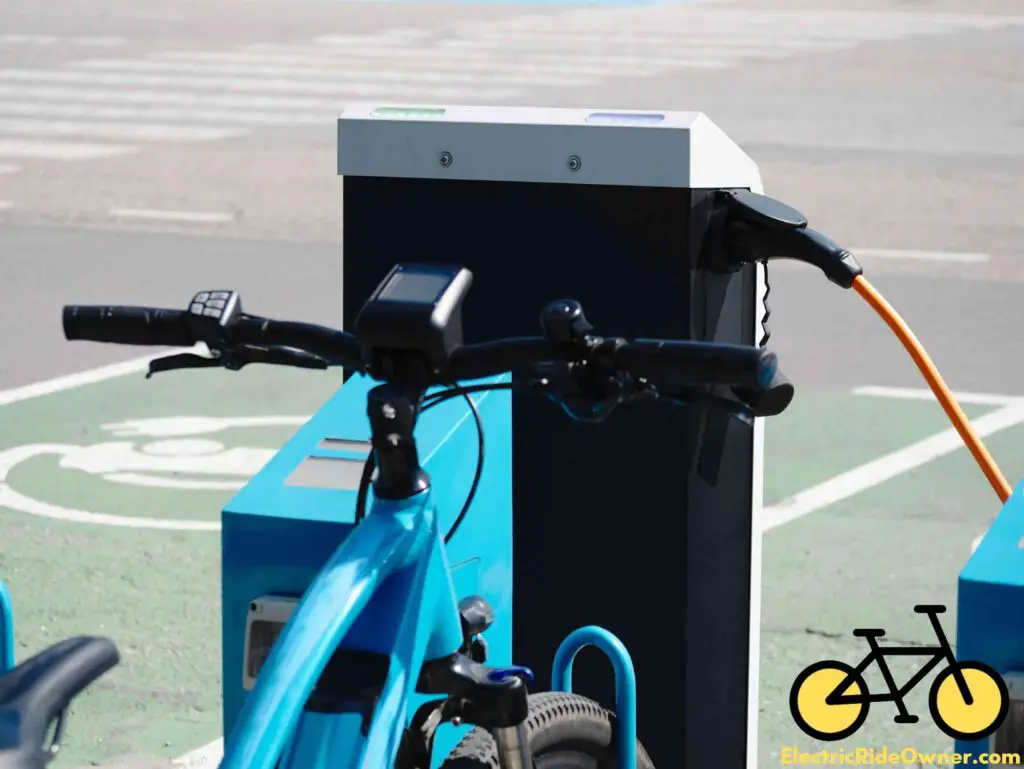
What Happens If You Run Out of Battery on an eBike?
As a general rule, if you run out of battery on an electric bike, you can still use it. While the electric bike motor and battery will stop working, you can continue to ride your e-bike just like a standard bicycle, where you have to pedal manually.
When your electric bike battery is drained, both the motor and battery stop working, leaving you without motor assistance. However, you can still ride the e-bike by pedaling, just like a regular bicycle. Fortunately, e-bike batteries are rechargeable. So, if your electric bike battery is empty, you can simply get your charger, charge your electric bike, and you’ll be ready for your next electric riding adventure.
If you find yourself away from home, there are still options available for charging your electric bike. We’ve explored these alternatives in our article ‘Where To Charge Your Electric Bike When You’re Away From Home.’
Do I Have to Remove My eBike Battery to Charge It?
As a general rule, you can remove your electric bike battery to charge it, but it’s not always necessary. Electric bikes come in various designs, with some featuring removable batteries and others with integrated batteries.
If your electric bike is equipped with a removable battery, you have the option to either remove it from the electric bike for charging or leave it in place. Removing the battery can make charging easier, especially if you’re doing so indoors, as they are generally easier to carry than the entire electric bike. They are also much easier to place. However, whether you remove it or not, the charging time and cost won’t significantly change, so the decision primarily depends on your preference for convenience.
On the other hand, if your electric bike doesn’t have a removable battery, you won’t be able to take it out for charging. In this case, the battery will remain integrated into the electric bike.
If you are charging your electric bike and would like to know how much it will cost, you can read our article “How Much Does it Cost to Charge an eBike (It May Shock You).”




